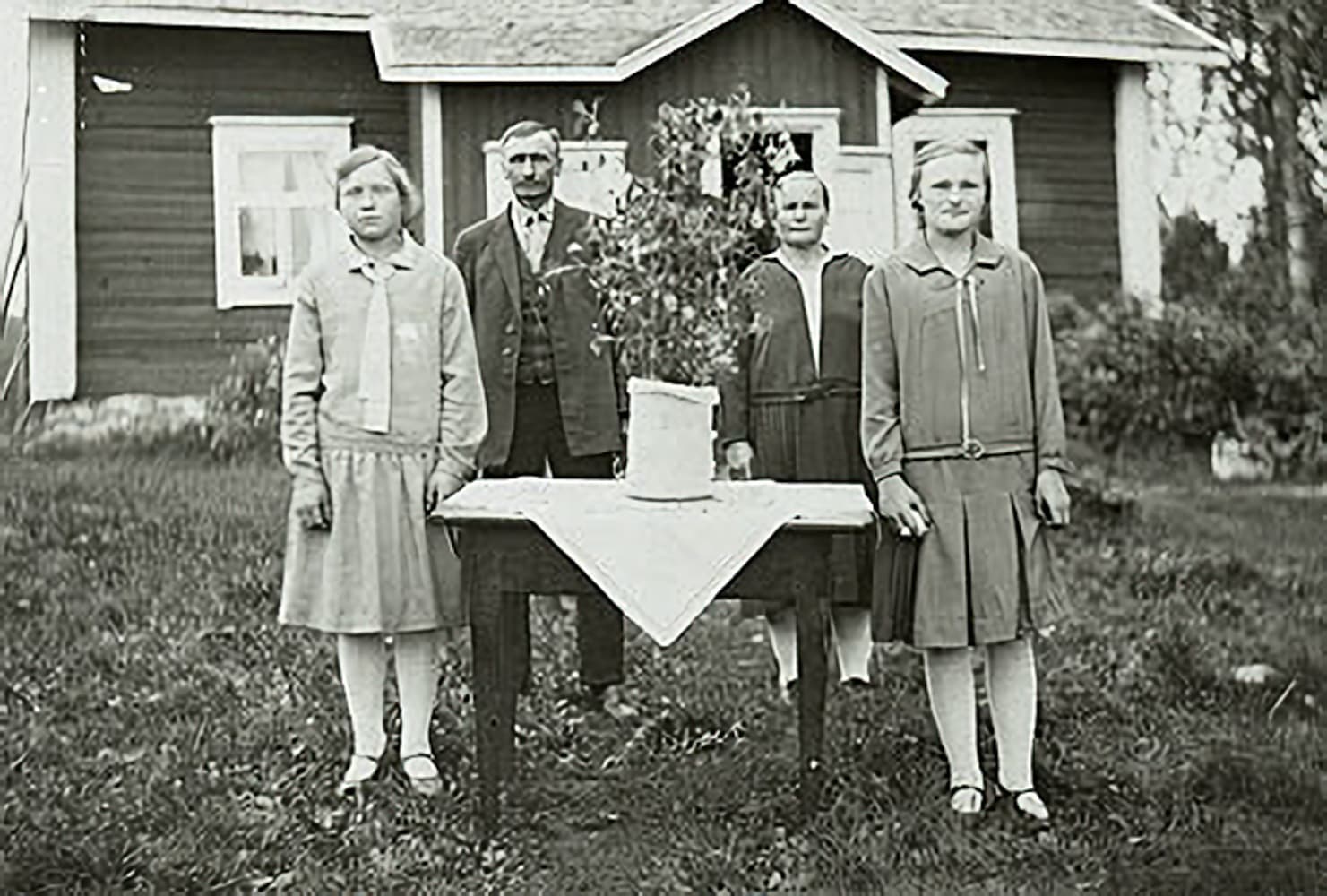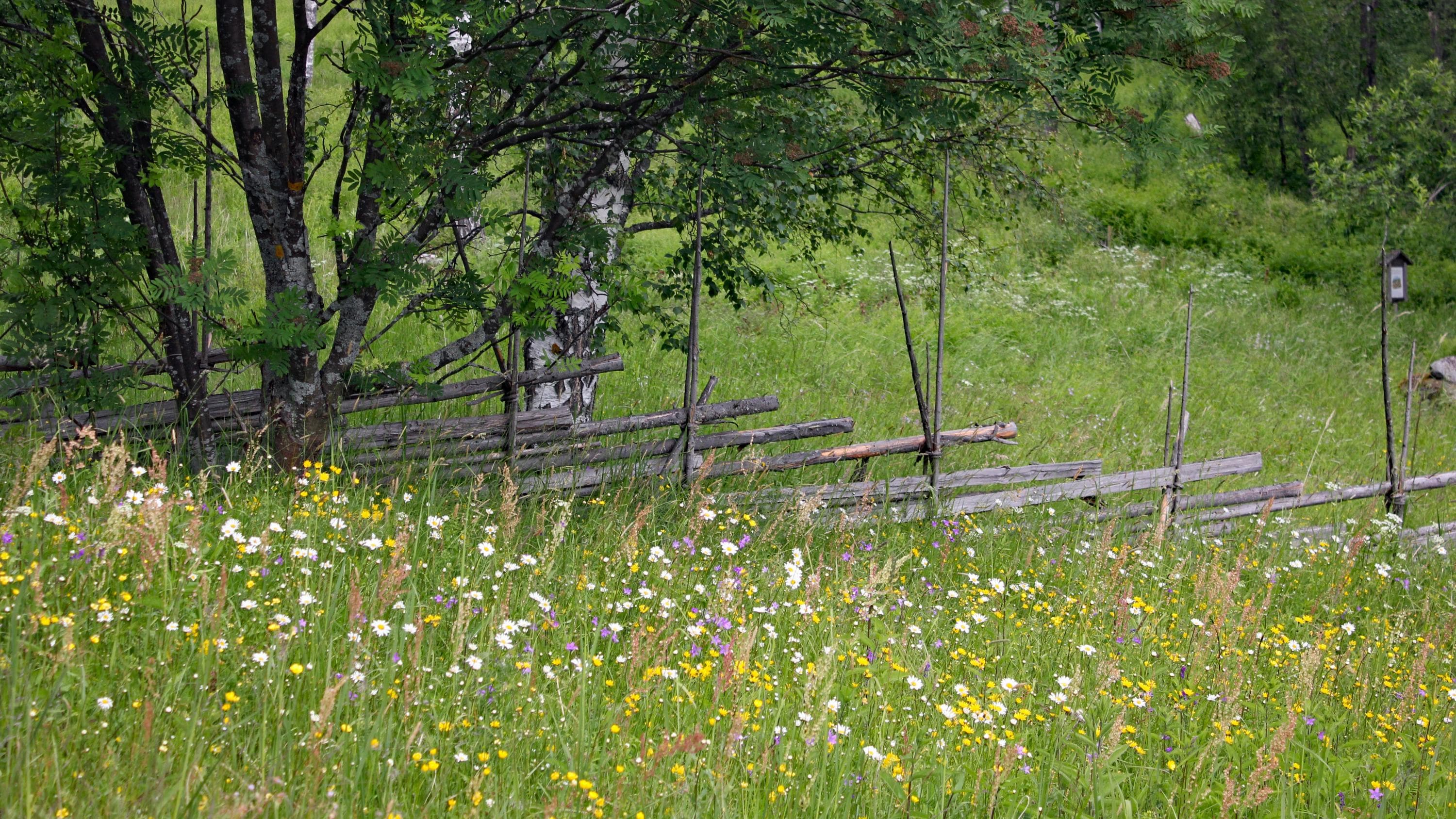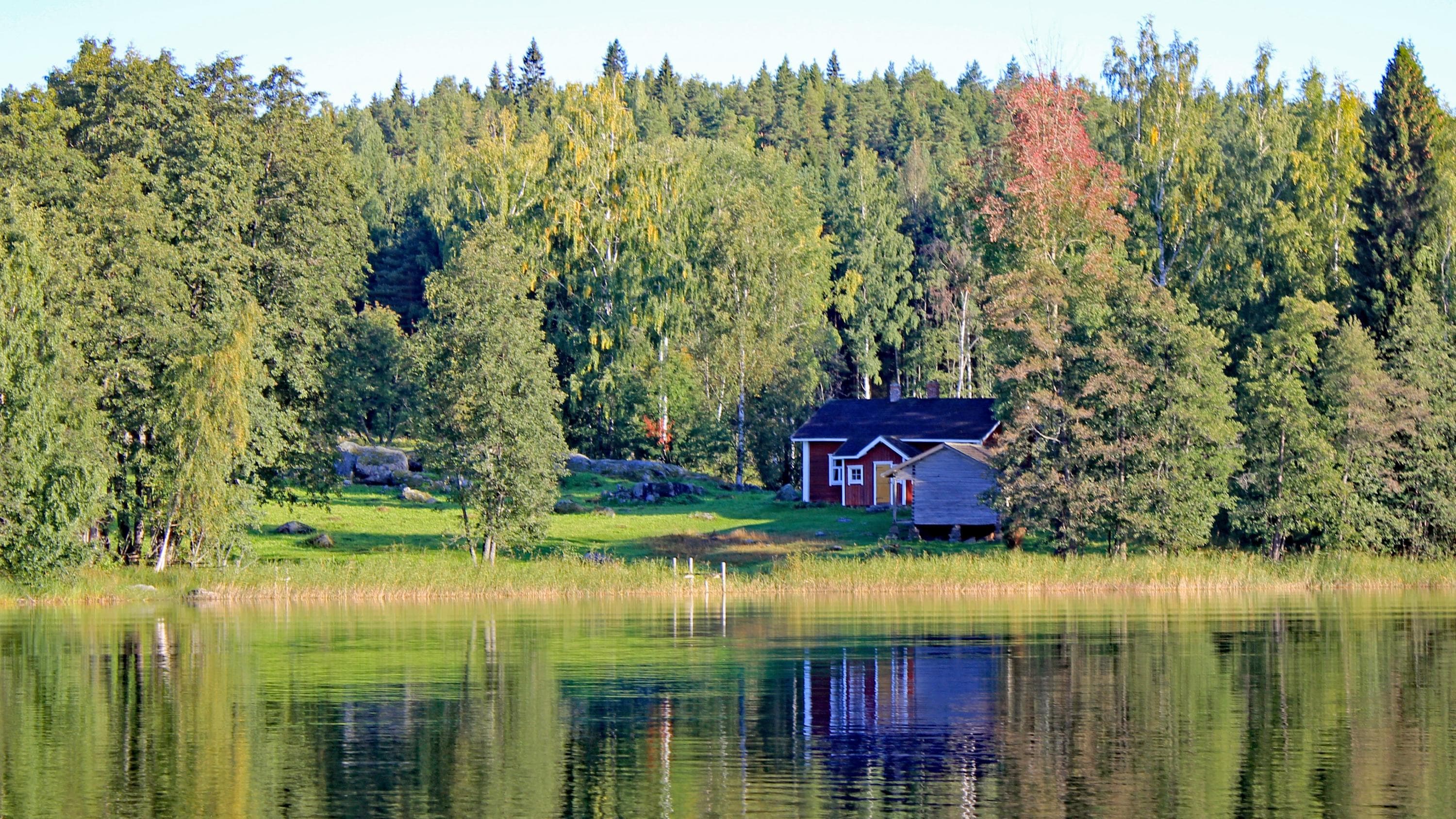History of Linnansaari croft
Waahersalo estate
The first known owner of Linnansaari Island (in this context, the main island of the national park) was Rantasalmi resident Polycarpus Johansson in the 1620s. Linnansaari Island was uninhabited at that time, but Johansson cleared the land using slash-and-burn methods. The island was merged with the lands of Putkisalo estate in the late 1600s – probably after the famine years. In the early 1700s, an area that included Linnansaari Island was separated from the estate lands.
Linnansaari Croft was established in the early 1850s so that Waahersalo estate could monitor forests left outside the scope of slash-and-burn clearing at Lake Haukivesi.
Adolf Johan Lyytikäinen was Linnansaari’s first crofter
Adolf Lyytikäinen, a farm worker on the Waahersalo estate, became the crofter at Linnansaari in spring 1852. His wife Helena Nikkonen, Adolf’s younger brother Matti and their father Johan also moved to the island. Matti married Maria Stina Terenius a few years later.
For the first few years, the Lyytikäinen family lived in a temporary residence as all their time was spent clearing the fields with slash-and-burn methods. In 1855, Adolf and Matti built the log cabin that is today’s Linnansaari Croft.
Forest ranger Fredrik Kasper
In 1864, Linnansaari Croft was transferred to 25-year-old Fredrik Kasper. Instead of becoming a crofter, he was appointed to the position of forest ranger for the estate. At that time, most of the estate forests were located in the Linnansaari archipelago.
Fredrik's family included his wife Ulla and their children Anna Lovisa, August, Erik Johan and Katariina Aurora. Only the oldest boy August survived until adulthood. The Kasper family moved to Oravi in 1898, after which Pekka Koponen from Enonkoski and his wife Anna Loviisa Karvinen came to Linnansaari. They left the island in 1907.
A lumberjack cabin
The lands of Waahersalo estate were acquired by a limited company called Collin in 1905. The company sold the estate to a farmer named Benedict Mennander the following year, but the rights to fell the Waahersalo forests were apparently left to Collin in the sales agreement. The company built large logging camps in the forests and felled trees were sold to St. Petersburg. The men employed by Collin slept in the croft. The croft could not accommodate all the lumberjacks, so a large stable was built along the Sammakkoniemi trail to house horses and lumberjacks. Bunks were attached to the walls for the men to sleep on. The stable no longer exists.
Crofter Antti Suhonen
Linnansaari became a croft once again when Antti Suhonen signed an agreement with Waahersalo estate. He moved to the island with his wife Anna Matintytär Pöllänen and their two children Einar and Sylvi Siviä. At that time, the yard had the main building, a stable, drying barn, sauna and two-part granary. Antti Suhonen built a shingled barn in 1911.
Crofter Oskari Parviainen
Oskari Parviainen rented the rights to Linnansaari Croft from crofter Antti Suhonen for 350 marks. Instead of owning the land they cultivated, a crofter paid rent to the estate for the right to use the land. In early March 1912, Parviainen signed a ten-year rental agreement with Mennander, who owned Waahersalo estate. Oskari, his wife Tilda Fredrika Lappalainen and their son Toivo Oskari moved to Linnansaari. A daughter called Toini Maria was also born to the family during their first year there.
Linnansaari is transferred to Metsähallitus
Metsähallitus purchased the Linnansaari archipelago from Waahersalo estate in 1913. One of Metsähallitus’ objectives was to preserve the “natural beauty” of the Saimaa islands. However, the primary purpose of Linnansaari was to produce timber for state-owned institutions.
Forest ranger Oskari Parviainen
Oskari Parviainen became a civil servant, or acting forest ranger because:
- he could read and write
- he was healthy, meaning he was able to work
- he was a reliable man recommended by estate owner Mennander
- a priest declared that he had a good reputation and was worthy of the local residents’ trust
Parviainen was responsible for supervision of Metsähallitus’ Waahersalo Park, with Linnansaari designated as guard district XVIII. Forest ranger Parviainen’s pay consisted of a rent-free croft and a monthly salary of 20 marks.
Linnansaari Croft was converted into a forest ranger farm
The croft became a government building in 1917, which made it possible for the state to allocate funds for construction and renovation work. The crofter agreement was no longer valid and the building became taxable. During the logging season, more than 10 men might spend several weeks at the forest ranger’s farm. The lumberjacks brought a cartload of food to Linnansaari once a week, and the forest ranger’s wife Tilda prepared the meals. A lack of space meant that some men stayed on the neighbouring Laattaansaari Island, while others may have skied home to spend the night during the winter.
Louhimaa farm
The crofter law gave crofters the right to purchase the farms they cultivated. In 1922, the law was extended to also cover forest ranger farms. Oskari first tried to purchase Linnansaari in the 1930s. After many purchase attempts, refusals and appeals, Oskari became owner of the farm. In 1940, he entered the farm (38.82 ha in size) in the land register under the name Louhimaa.
Parviainen’s son Toivo was killed in the Continuation War and there was no one to continue running the farm. Oskari was no longer able to manage the farm alone. In the early 1950s, Oskari brought in tenants who cultivated Louhimaa for a few years. The farm was eventually abandoned in the late 1950s.
Back to the state
The state repurchased Louhimaa Farm from Oskari Parviainen’s heirs in 1975. The farm later became part of Linnansaari National Park, which was established in 1956.

Slash-and-burn agriculture and traditional landscapes
The croft residents used slash-and-burn methods to clear forests until the early decades of the 1900s. The aim is to restore the croft and its cultivated areas to the state they were in when Tilda and Oskari Parviainen lived there in the early 1900s. Use of slash-and-burn methods began again on Linnansaari Island in summer 1993. Read more about slash-and-burn agriculture in Telkkämäki heritage farm.
The old agricultural methods – slash-and-burn, grazing, mowing – created habitats that are today's semi-natural grasslands. They are the most species-rich habitat in Finnish nature. Without active management, open meadows will be overgrown with bushes and trees, and previously open wooded pastures become too dense for meadow species to thrive. The decrease in traditional landscapes threatens many species, especially plants and insects. Read more about semi-natural grasslands
The environment around Linnansaari Croft is an important traditional landscape site, where the aim is to preserve the landscape created by humans during the slash-and-burn era and protect species that depend on it and are now endangered.

Opening hours and location
- Linnansaari Croft is open to the public all year round.
- There are no staff at Linnansaari Heritage Farm.
- There is no charge for visiting Linnansaari Heritage Farm.
- The heritage farm is located on the main island of Linnansaari National Park. More information is available on the Directions page for Linnansaari National Park.

